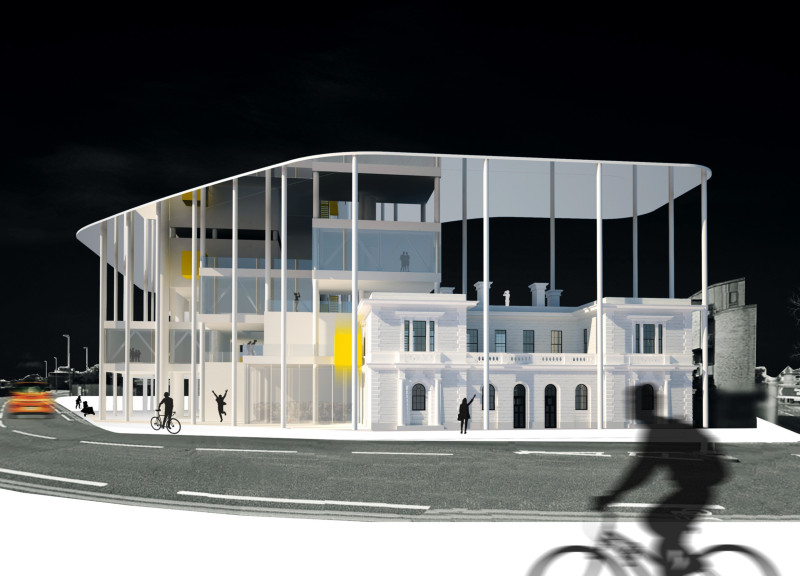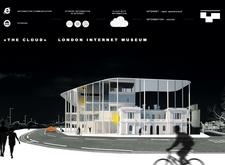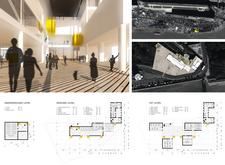5 key facts about this project
### Overview
Located in London, the project addresses the need for a museum dedicated to the internet, integrating technology with opportunities for community interaction. The design creates a dialogue between physical and digital realms, promoting inclusivity and accessibility through its various features that invite exploration around themes of information, technology, and communication.
### Spatial Organization and Circulation
The museum's layout employs a clear functional zoning strategy, distinguishing between public areas, educational spaces, and exhibition rooms across its three levels. The ground floor includes a welcome zone, dining facilities, and offices, supporting a vibrant visitor experience. The first level features an open square for gatherings and flexible exhibition spaces, while the upper levels contain libraries and galleries designed to encourage research and contemplation.
Visitor flow is optimized through a deliberate circulation plan, allowing students, researchers, and the general public to navigate the space intuitively. An open atrium enhances connectivity and provides natural light, further promoting engagement among diverse user groups.
### Material Selection and Sustainability
The project employs a thoughtful selection of materials: concrete is used for structural integrity, while glass offers transparency and visual continuity with its environment. Steel contributes to the framework’s robustness, and wood provides warmth in the interior design.
Sustainability is integral to the design, featuring roof-mounted solar panels, a rainwater harvesting system, and geothermal heating and cooling solutions. These elements reflect a commitment to reducing environmental impact while enhancing the building’s functionality.
A distinctive feature of the design is its dynamic facade, characterized by a grid of columns that evoke cloud formations, supporting passive ventilation and underscoring the project's sustainable aspirations. The incorporation of both physical exhibition spaces and advanced technological interfaces captures the complexity of the internet experience, merging traditional museum elements with contemporary digital contexts.






















































